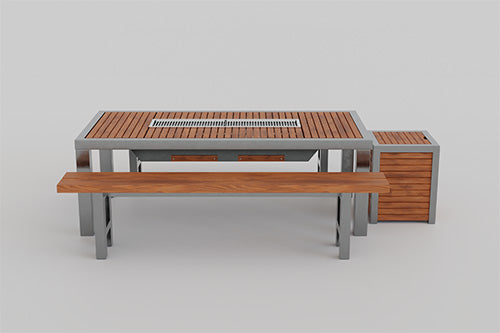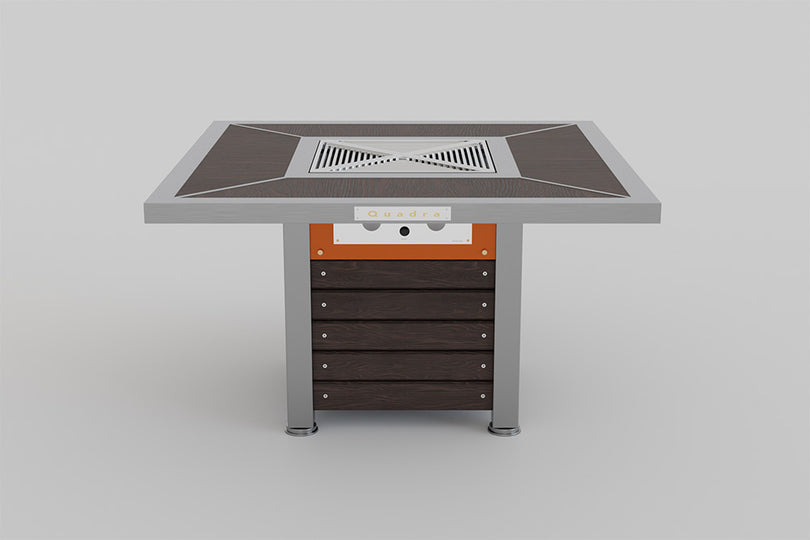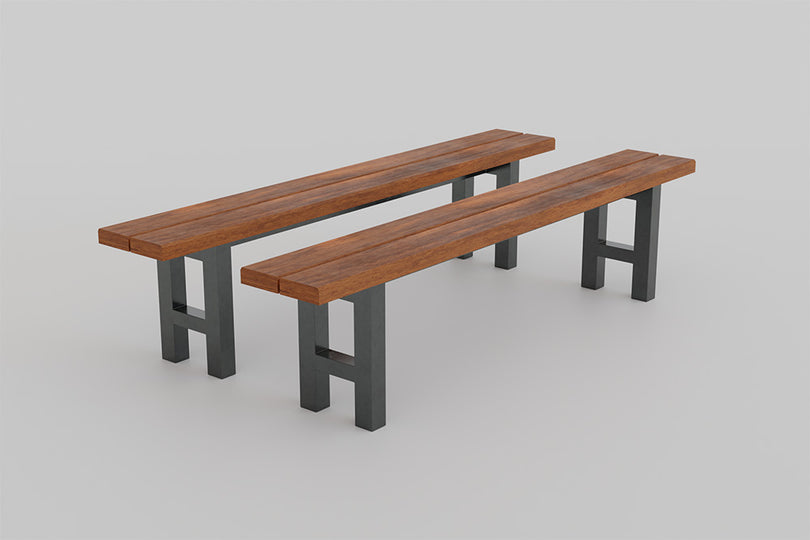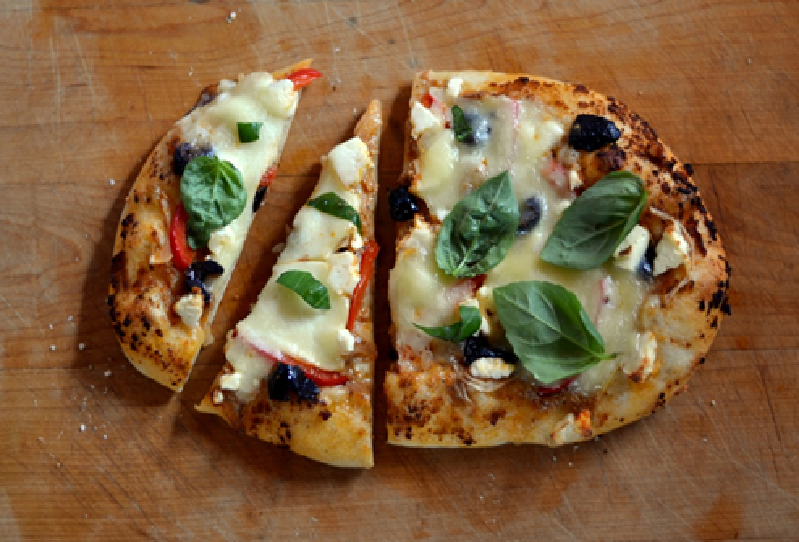So ... what is BBQ?
As it turns out the answer to this question inspires a fair share of fiery debate. The definition of barbecue changes according to your location on the planet. The truth is, BBQ describes a multitude of cooking styles. It can describe campfire cookery and the sizzling fire pit rotisseries found in many cultures to a more delicate Japanese/Korean yakiniku style of BBQ which focuses on elegant, bite-sized pieces of meat; or in down-under, enjoying a barbie on a luxury bbq grill. And even within our own country, the description of BBQ changes depending on where you are located in the United States. Even in a single state, there can be a difference of opinion as to what BBQ is! In America, BBQ is defined regionally. Some proponents of BBQ styles in the southeastern states insist that food needs to be cooked slowly over a low heat to be called BBQ. An equally fervent group cook their supper over a high searing heat on state-of-the-art luxury bbq grill and comparatively quicker on outdoor gas grills we see in almost every backyard in America. Both bodies of opinion do have one important point in common. It all starts with fire.
It began with Homo Erectus
The discovery of fire and its connection to cooking has been the subject of scientific discussion for many years. As recently as 2013, scientists have pointed to Homo Erectus as being one of the first backyard aficionados to use an open flame for the cooking and preparation of food. These assertions come from archaeologists working at the ongoing dig located on the Wonderwerk caves site in South Africa. A rough time frame would make the first known BBQ, at the very least, one million years ago. The length of time humans, or their distant relatives, have been at it remains open to debate, but we do know that the indigenous peoples of America were known to cook on their own version of the barbie long before any Europeans ever set foot on these shores. As North America cookery has evolved over the last three or four centuries, so has the penchant for outdoor cooking.
From Barbacoa to Barbeque
On the American continents, the origins of grilling food outdoors stems back to pre-Colonial times. The Arawak people of South America and the Caribbean practised outdoor cooking by roasting meat on wooden structures. The Spanish term for this wooden structure was barbacoa. It's easy to imagine how, over the years, the name used to describe outdoor cooking morphed from barbacoa into barbecue. Sometime over the last century barbecue, or barbeque, became BBQ and currently both terms are used interchangeably. Today there are hundreds of barbecue manufacturers in North America who compete for the grilling enthusiasts dollars with basic models selling for under a $100 to the more pricey luxury bbq grill that retails for $10,000 or more. Looking back over the years of flipping burgers and more exotic culinary fare we can follow the gradual evolution of the barbecue grill to its respected place as a popular cooking appliance.
Times Change...
Eventually, the practice of cooking dinner moved from the great outdoors to a more climate controlled indoor location, based on practicality and convenience. But as industrialization and modern conveniences made life more comfortable, the leisure time of North Americans increased. By the early 1950's, Americans had more free time on their hands after a long day at the office and their instinct was to spend a portion of those leisure hours in the great outdoors. A natural progression was to compliment time at the cottage or hiking in the park with a meal cooked outside. As a result, the barbecue quickly became a common possession and was soon found in most American backyards.
A brief synopsis of the contemporary barbecue follows:
- In 1897, Ellsworth B. A. Zwoyer invented the barbecue charcoal briquette, its patented design meant to fuel outdoor grills. Unfortunately, the Kingsford Products company owned by Henry Ford, credited itself as the sole creator, stealing much of the thunder from Zwoyer.
- In the late 1940's and early 1950's, open brazier grills became the popular choice for outdoor cooks. By the mid-fifties these grills were redesigned to stand on legs and the portion of the unit holding the charcoal or briquettes came with a hinged lid included. The lid functioned to evenly distribute heat and help seal in the flavor of the food being cooked. Vents were built into the unit's sidewalls to allow oxygen to get to the smoldering briquettes.
- In the 1960's, William G Wepfer and Melton Lancaster, both natural gas company employees, refurbished a charcoal grill to run on bottled propane. Although some consumers were reluctant at first to change over, due to existing propane fuel costs, the new cooking appliance quickly became a favorite of grill lovers everywhere
- The first gas-fueled units depended on permanent lava rocks to retain heat for cooking while those designs that followed cooked food directly over a flame or via heated grill elements.
- The most common gas grill in today's market is the one based on a design that incorporates a grill on a wheeled frame which also holds the propane tank. The same design often includes side tables and even additional cooking elements.
The Gas Grill
In the last fifty years, the gas grill has enjoyed tremendous support and popularity among barbecue lovers. The barbecue offers far more to the outdoor chef than a cooking space for hamburgers and hot dogs. It's evolution of design appeals now to an even larger audience of eager cooks. The versatile design features employed by today's gas grill manufacturers make them attractive to the most sophisticated of cooks. Gas grills can literally cook almost anything and even the most fervent traditionalist among the cooking ranks will attest to their value. Over the years, the basic gas grill has undergone one metamorphosis after another and has adapted easily to these many transitions and today remains a trusted and competent go-to tool for the outdoor cook. The basic grill or any one of its more sophisticated high-end luxury bbq grill relatives can be found everywhere and in every conceivable kind of retail outlet. From the basic model to the ultra luxury bbq grill, the barbecue grill has become a must-have for homeowners across North America.
The Evolution Continues...
And the evolution of the gas grill design continues. Thanks to America's love affair with BBQ, manufacturers are constantly improving on the concept and delivering a bevy of products, from basic grills to luxury bbq grills and
high-end barbecue tables and appliances to compliment America's outdoor kitchen. The focus of BBQ has always been to provide good delicious food, whether it's cooked on a basic grill or on a luxury bbq grill. What is most important is that the BBQ experience brings friends and family back together at the table to enjoy the fruits of their labor. To that end, the BBQ tradition is moving forward and winning new converts as it goes.







